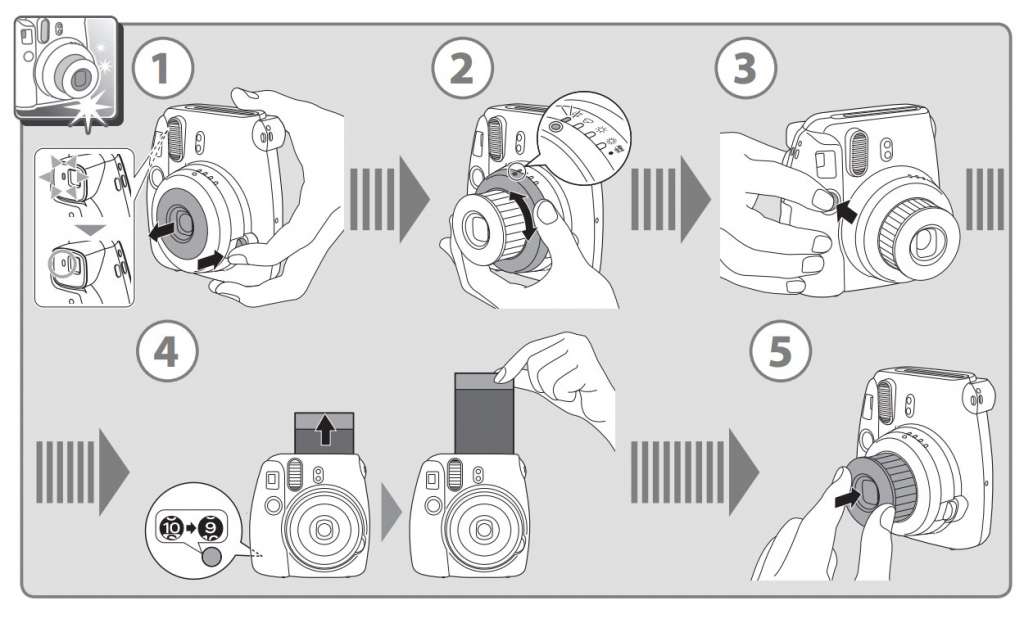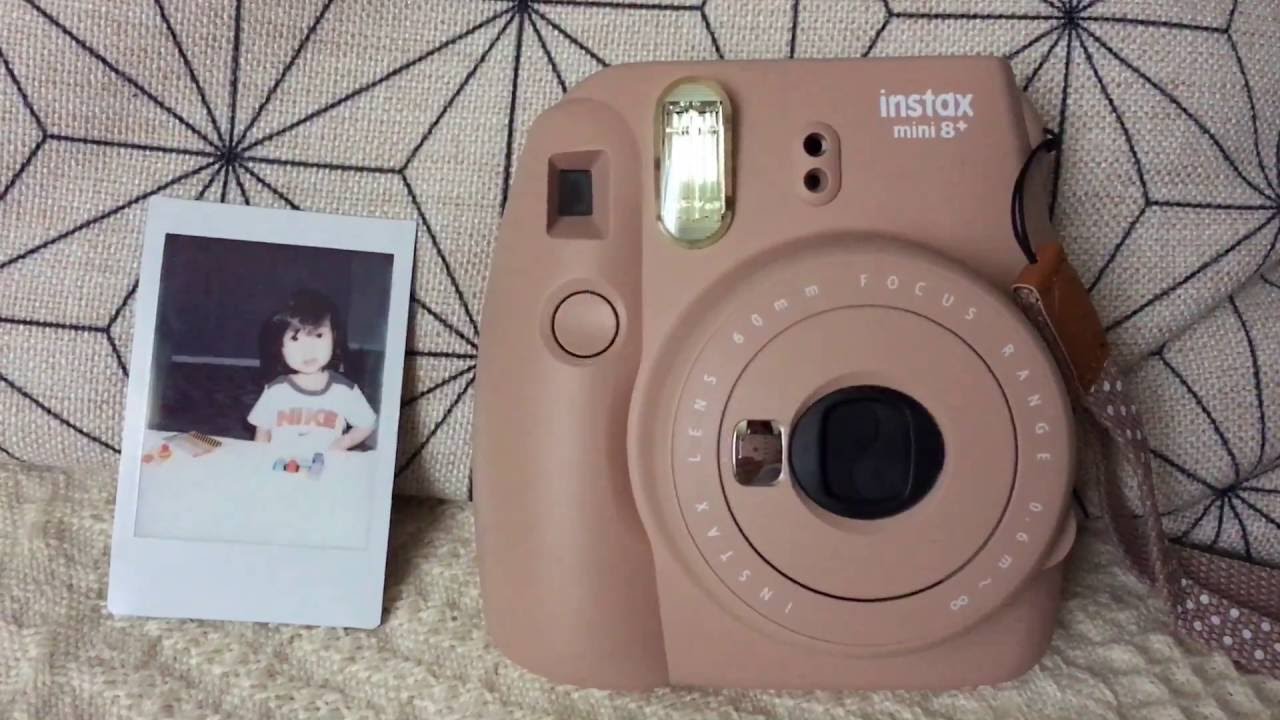To use a Polaroid camera, load film, focus, and press the shutter button to take photos. Capturing memories with a Polaroid camera is a nostalgic and fun experience.
These instant cameras produce unique, vintage-style photos that are perfect for keeping special moments tangible. Understanding how to use a Polaroid camera properly can help you create lasting memories effortlessly. From loading the film to adjusting exposure settings, knowing the basics will ensure each photo turns out just right.
In this guide, we’ll cover the essential steps for using a Polaroid camera effectively, so you can start snapping away and preserving moments in a classic way. No need to be a professional photographer – with a Polaroid camera, anyone can be an instant photography enthusiast.

Credit: www.youtube.com
Choosing The Right Polaroid Camera
Are you ready to dive into the wonderful world of instant photography? Choosing the right Polaroid camera for your needs is an essential first step. With a multitude of options available in the market, it can be overwhelming to make a decision. However, by identifying your needs, considering your budget, and checking the features, you can find the perfect Polaroid camera to capture your memories in an instant.
Identifying Your Needs
Before you purchase a Polaroid camera, it’s important to identify your specific needs and preferences. Ask yourself what you intend to use the camera for and how frequently you plan on using it.
A couple of questions to consider:
- Do you want a Polaroid camera for everyday use or just for special occasions?
- Will you be using it to capture landscapes, portraits, or close-up shots?
- Do you require any special features such as a built-in flash or manual control options?
By answering these questions, you can narrow down your options and choose a Polaroid camera that suits your individual needs.
Considering The Budget
While exploring different Polaroid camera models, it’s important to consider your budget. Polaroid cameras range in price, so it’s essential to determine how much you are willing to spend.
Creating a budget will help you eliminate cameras that are beyond your price range and allow you to focus on the ones that fit within your budget. Keep in mind that more expensive cameras might offer additional features and higher quality prints, but that doesn’t mean the cheaper options won’t meet your needs.
Remember, it’s all about finding the right balance between price and functionality to ensure you get the best value for your money.
Checking The Features
Once you have identified your needs and determined your budget, it’s time to dive deeper into the specific features of each Polaroid camera model. Pay close attention to the following aspects:
- Picture quality: The quality of the photographs produced by the camera is crucial. Look for cameras that offer sharpness, clarity, and vibrant colors.
- Film compatibility: Different Polaroid cameras may require specific types of film, so make sure the camera you choose is compatible with the film readily available in your location.
- Size and portability: If you plan on taking your Polaroid camera with you on trips or outings, consider its size and portability. Compact and lightweight cameras are more convenient for on-the-go photography.
- Additional features: Some cameras offer built-in flash capabilities, self-timers, manual control options, and even double exposure modes. Consider which additional features are important to you and make a note of them.
By carefully checking and comparing the features of different Polaroid cameras, you can make an informed decision that aligns perfectly with your photography goals.

Credit: www.wikihow.com
Familiarizing Yourself With The Camera
When working with a new piece of technology, it’s essential to get acquainted with its features and functionalities. Familiarizing yourself with the Polaroid camera is an important first step to capture stunning instant photographs. Understanding the different parts, reading the user manual, and handling the camera with care are key aspects of this process.
Understanding The Different Parts
Become familiar with the different parts of the camera to handle it efficiently. The following table presents a quick overview of the main components:
| Part | Description |
|---|---|
| Lens | The part that captures the image. |
| Viewfinder | Allows you to compose your shot. |
| Shutter button | Press to take a photo. |
| Flash | Provides additional light for indoor or low-light settings. |
| Film slot | Where the instant film is loaded. |
Reading The User Manual
Before using the camera, read the user manual thoroughly. The manual contains valuable information about the camera’s operations, maintenance, and troubleshooting tips. It’s imperative to understand the specific features and controls for optimal usage.
Handling The Camera
- Hold the camera firmly with both hands for stability.
- Use the strap to secure the camera around your wrist for added safety.
- Avoid exposing the camera to extreme temperatures or moisture.
- Always keep the lens and viewfinder clean for clear, sharp images.
Loading The Film
Learn how to load the film into your Polaroid camera with ease. Follow these step-by-step instructions to capture perfect instant photos every time.
Locating The Film Compartment
Before loading the film, locate the film compartment of your Polaroid camera for easy access.
Inserting The Film Cartridge
Insert the film cartridge into the designated slot ensuring it fits securely in place.
Securing The Film Pack
Secure the film pack by following the instructions provided, ensuring each step is carefully completed.
Taking A Polaroid Photo
When taking a Polaroid photo, it’s important to follow specific steps to achieve the best results.
Setting Up The Shot
Before capturing an image, make sure the scene is well-lit and arranged the way you want.
Adjusting The Exposure Settings
Ensure the exposure is set correctly based on the lighting conditions to avoid dark or overexposed photos.
Focusing The Image
By adjusting the focus, you can ensure that the subject of your photo is clear and sharp.
Developing The Photo
Once you’ve captured the perfect moment with your Polaroid camera, the next step is to develop the photo. This process involves ejecting the photo from the camera, waiting for the image to appear, and ensuring the photo is protected from light. Let’s explore each step in detail.
Ejecting The Photo
After pressing the shutter button, the photo will emerge from the camera. Ensure that it is ejected smoothly to prevent any damage to the image.
Waiting For The Image To Appear
Once the photo is ejected, the image will gradually begin to surface. Be patient and avoid touching the photo during this time to allow the picture to develop properly.
Protecting The Photo From Light
From the moment the photo is ejected, it is crucial to shield it from any light sources. Keep the photo face down and away from direct sunlight or artificial light, as exposure to light can impact the quality of the developed image.
Tips And Tricks For Better Polaroid Photos
Capturing memories with a Polaroid camera is a nostalgic and fun experience. While the instant prints are charming in their own right, there are some tips and tricks you can use to enhance the quality and creativity of your Polaroid photos. From experimenting with different angles to utilizing natural lighting and adding creative effects, you can take your Polaroid photography to the next level. In this article, we will explore these tips and tricks in detail.
Experimenting With Different Angles
Getting creative with your angles can add a unique perspective to your Polaroid photos. Instead of always shooting from eye-level, try capturing your subject from above or below to create interesting compositions. Tilt the camera slightly or position it at a different angle to add a dynamic touch to your photos. Play around with different angles and experiment until you find the one that best captures the essence of your subject.
Using Natural Lighting
Natural lighting can greatly enhance the quality of your Polaroid photos. When shooting outdoors, take advantage of the soft, diffused light during the golden hour, which occurs during the first hour of sunrise and the last hour of sunset. Avoid harsh midday sunlight as it can create strong shadows and overexposed areas in your photos. Additionally, consider using the light source, such as the sun or a lamp, to create interesting silhouettes or dramatic lighting effects.
Adding Creative Effects
One of the unique aspects of Polaroid photography is the ability to add creative effects right from the start. Experiment with different films and filters to achieve a specific mood or style in your photos. For example, black and white film can give your photos a classic, timeless feel, while color films with vibrant tones can add a sense of liveliness. Consider using double exposure techniques to overlap images and create ethereal and dreamy compositions. Don’t be afraid to play around with different effects and unleash your creativity!
With these tips and tricks, you can take your Polaroid photography to new heights. Remember to experiment with different angles, utilize natural lighting, and add creative effects to capture unique and visually pleasing moments. So grab your Polaroid camera, explore the world around you, and let your creativity shine through.

Credit: www.adorama.com
Conclusion
In mastering the Polaroid camera, practice and patience are key. Understanding lighting and composition can elevate your instant photos. With these tips, capturing nostalgic moments becomes effortless. Experiment with different film types and enjoy the journey of self-expression through instant photography.
Unleash your creativity and have fun with your Polaroid camera!


0 comments